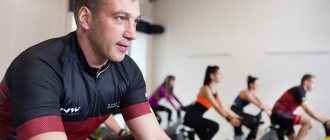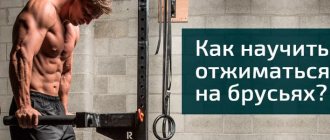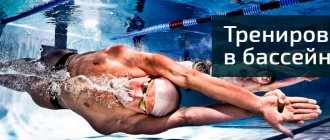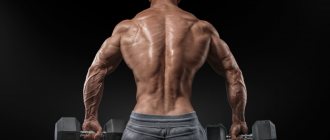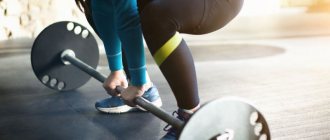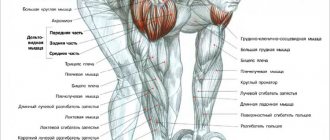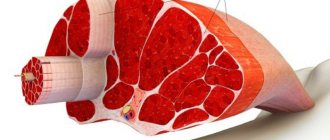When I first started getting interested in bodybuilding, I immediately started looking for sources of information on this topic, because I wanted to train wisely, and not at random, in order to progress as quickly as possible. Just like everyone else, my startup was exclusively “natural,” which is why I experienced the greatest trepidation when I picked up the book “Think. Bodybuilding without steroids" by Stuart McRobert. Of course, this was the first source that openly admitted that training without pharmacological support should be done in a different way, that is, not in the way that the vast majority do. Of course, I wanted to open this work as soon as possible, immerse myself in reading in order to gain access to the secret of natural training, because at that time no one offered anything fundamental and motivated in this area. At the same time, it is worth recognizing that Alexey Kireev’s book “Culturalism in Our Way, or Secrets of the Rocking Chair” was also available. The book is quite good and aimed at the local reader, which seemed to me a kind of negative factor, since the level of development of Western bodybuilding was considered prohibitive, and therefore the Western author was perceived as much more authoritative for me.
The golden thread runs through all the chapters of the book “Think. Bodybuilding without Steroids” was based on the idea that “natural” training should have a limited volume, significantly different from that in traditional programs. Both the amount of work per muscle group and for the entire workout as a whole. The highest figure I came across in the book was 6 approaches per muscle group in one workout, but in most of the proposed complexes it was even lower, down to one approach. Such a low number of approaches, perhaps, could only be found in the works of Mike Mentzer, in particular, in his famous “Supertraining”. Well, if you dig even deeper, then Arthur Jones in his “VIT”, but the creator of the “Nautilus” simulators generally had many approaches during a workout, since the whole body was worked out.
Stuart McRobert wrote that training using abbreviated programs can work wonders and is the only way to successfully progress for people not only who do not take steroids, but especially those who have weak genetic potential. I considered myself to be among the latter, finding a thousand subjective confirmations of this. It is worth saying right away that, obviously, a small volume of load on one muscle group is not justified from the point of view of sports physiology, due to the fact that in one or two approaches the optimal amount of growth factors cannot accumulate in the muscle. However, this did not stop me from raising my weight from 74 kg (with a height of 184 cm) to 92 kg in a year and a half. Of course, some of this weight was accounted for by fat, but much more objective indicators of muscle mass growth were progress in the volume of arm circumferences, which changed by 5 cm (36 - 41 cm), and an increase in strength indicators (bench press: 50× 10 – 100×10, deep squats: 60×10 – 130×10). I achieved these results by performing no more than three approaches per muscle group per workout, and even then I did not reach three approaches right away. For the first six months I had only one approach, then I added two, and only then it became three. The total number of approaches for all trained muscle groups per workout never exceeded 5–8. Of course, I’m not the only person who managed to achieve progress by doing shortened programs, so we can confidently state that for some category of athletes they will be really useful, maybe even very useful. First of all, these are beginners with small muscle mass and a low level of physical development. Why?
Differences between the training of a chemist and a natural person
Muscle growth is an external manifestation of the level of anabolic hormones in the blood or, as they say, growth factors.
Today, the main growth factor is insulin, so anyone who is “stupidly gaining weight” should consume carbohydrates without restrictions.
When it comes to dry mass, the second most important growth factor is growth hormone - somatotropin.
Testosterone is usually placed in third place.
Natural training and diet can slightly increase the level of growth factors in the body and change the shape of the body: increase muscle and reduce subcutaneous fat.
Insignificant means: minus 200 grams of fat and plus 100 grams of muscle per week.
If you inject insulin, growth hormone and testosterone derivatives, you can burn a kilogram of fat per week and build a kilogram of muscle.
Hormones can be used to create a figure 5 times faster than a natural one.
Of course, all this is up to a certain limit. For naturals, the dry mass limit is approximately “height minus one hundred,” for chemists it’s “height minus 50.”
50 kilograms of muscle and an infusion of a dose that is 1000 times greater than the natural production of anabolic hormones are the main differences between a natural and a chemist.
There are people who are afraid to do a lot of chemicals or don’t have enough money, so they call themselves gods of aesthetics, mens physicists and naturals with a weight of not 150 kg, but only 100 kg of pure muscle.
Why the 5x5 training principle is so effective
As we have already said, it would be more correct to consider the 5x5 system not as a specific training program, but as a training principle. Its essence lies precisely in the combination of the number of approaches and repetitions.
The fact is that a natural athlete’s strength and mass do not grow from a large number of repetitions. And not from great fatigue. Muscles grow from maximum strength stress in a certain repetition range. As a rule, in bodybuilding we are talking about 6-12 repetitions per set.
This rep range itself is small. Many beginners generally find it strange how they can pump up by doing only 6-12 repetitions. They think that to grow muscles they need to work in a high-repetition mode.
Practice shows that this is not so. High repetitions build strength very poorly, and build muscle mass relatively poorly. It gives a good pump and a feeling of powerful pumping. But pumping comes and goes, and in the long term it does not give serious results. Therefore, for a natural person, low repetition is the best choice. Many experienced athletes come to this idea with experience.
And even if a range of 6-12 repetitions is taken, then even in this range there will be a big difference if we compare, say, 6 and 12 repetitions. In what case will you create maximum strength stress in the muscles? That's right, at 6 reps you can handle much more weight than at 12 reps. Consequently, the load on the muscles will be greater. This is exactly what we are trying to achieve.
In the case of the 5 by 5 program, we perform even fewer repetitions. Not even 6, but only 5. This is what allows you to provide the same maximum strength stress that makes you increase muscle mass and strength.
Theoretically, the number 5 is not some kind of magic in this case. With the same success, you can do 4 or 6 repetitions, or perform not 5 approaches, but 4 or 3. There is no fundamental difference. The core of this program is low reps and heavy strength work.
Fulbadi training for naturals
Any natural should start training with a full body and switch to a split no earlier than a year of training.
Judge for yourself.
To grow you need to follow a weekly plan. In my method, the minimum volume of one exercise or one movement or one muscle group is 25 approaches per week.
These 25 sets can be broken down into 5 workouts of 5 sets, or you can do a “chest day” of 25 sets of bench presses.
What seems easier to you: running a marathon in one workout or in a week, breaking 42 kilometers into 6 workouts of 7 km each? If you don't know the answer, try it.
Anyone with little training experience will agree that 5 workouts of 5 sets is easier than one workout of 25 sets.
When you go to the gym and do 5 sets of bench presses, do you go home or work out for an hour? Do beginners fit 5 sets into 10-15 minutes of training and drag themselves to the gym for them?
Of course, since you’ve already come to the gym, you can train for an hour, so you can do 5 sets of other exercises for other muscles.
I hope you understand why full body is for beginners, and split is for advanced athletes. And very rarely an advanced athlete can do a normal split.
Personally, I have to be in a really good mood to do 25 sets of pull-ups in a workout. But I am weak in spirit and body, so I do 3 exercises of 10 approaches per workout - I train fullbadi.
Why is Reg Park's option bad?
Reg Park, of course, was a great athlete, so you have to be bold enough to criticize his program. But we'll try anyway.
For example, this program is suggested to be performed 3 times a week. We believe that this is very, very high for such a basic program (for example, heavy squats are included in every workout). Even chemists are unlikely to be able to fully recover with such a training schedule, and naturalists will 100% get severe overtraining.
At best, you can train with such a program only at the very, very beginning of your training. Literally, the first 1-2 months. At this stage, the working weights are still small, as are the muscles, and the body does not spend so many resources on their restoration. Continuing to train in this way, or even if you already have a solid amount of training experience, is a road to nowhere.
You need to either create a split program (so that the exercises are not repeated in different workouts, and fundamentally different muscle groups work), or increase the rest time between workouts.
The best option would be to train with this program a maximum of 2 times a week. But in truth, I would like to say that it is better to train only once (yes, this also happens). Don't be afraid to rest for a long time and recover well!
We do not rule out the possibility that at the time of Reg Park, bodybuilding, in fact, was just in its infancy and had not yet acquired a scientific base. People themselves felt for ways to train muscles, looked for working options, and it is quite possible that Reg Park’s option in this regard was quite good, but still not an ideal option. He, too, could be mistaken about something. In addition, Reg Park himself was definitely taking steroids.
Even now, decades later, there is no consensus in bodybuilding on a number of issues. There are many conflicting opinions. Therefore, we can safely assume that in those days everything was even more complicated.
Exercises
I personally prefer this set of exercises, you can replace them with those that suit you better. But, of course, the movements should be similar: leg extension is not a replacement for squatting.
Quadriceps:
- Heavy weight – front squat or Zercher squat.
- mTor – goblet squat or lumberjack squat (see picture).
- Myo-repetitions - leg extensions in the simulator.
Breast:
- Heavy weight – bench press on a parallel or inclined bench (head up).
- mTor – dumbbell bench press lying on a parallel or inclined bench (head up).
- Myo-repetitions – abbreviations on a machine, butterfly or press on a chest machine.
Deltas:
- Heavy weight - regular bench press (standing) or seated press in a Smith machine.
- mTor – side dumbbell lift on an inclined bench (see video)
- Myo-repetitions are dumbbell lateral raises or shoulder presses.
Triceps:
- Heavy weight – close grip bench press on a bench or floor.
- mTor – extension with one dumbbell overhead (see picture).
- Myo-repetitions – downward extension on a block with a rope handle (see picture).
Hamstrings:
- Heavy weight – Romanian deadlift for the rest/pause method, partial deadlift from plates (bar on the middle of the shin) for cluster sets (see picture).
- mTor – Romanian deadlift with dumbbells, socks on a stand 2-3 cm (see photo).
- Myo-repetitions – leg curls on a machine.
Lat:
- Heavy weight – neutral grip pull-up or lat pull-down
- mTor – pullover with a dumbbell (see picture).
- Myo-repetitions - pullover (pull down with straight arms) on a block (see video).
Diamond and rear deltoids:
- Heavy weight – deadlift lying on a bench (see picture).
or wide-grip bent-over row (see photo).
- mTor – lower block pull with a neutral grip.
- Myo-repetitions – rear delt flyes or dumbbell lateral raises.
Biceps:
- Heavy weight – standing barbell curl.
- mTor – curling arms with dumbbells on an incline bench (see picture).
- Myo-repetitions - curling the arms on a block machine.
History of Natural Bodybuilding
Anabolic hormones began to be taken after 1935. A photo of any athlete before 1935 can be an example of natural bodybuilding.
You have to understand that before 1935 there were few photographs and unique people were photographed.
If a person was photographed in a pose with tense muscles, it means that he was an elite athlete.
To get into elite athlete shape, you had to make strength training a profession. It was impossible to enter the circus arena and lose to the spectators in strength.
Busy people cannot afford to achieve the figure of an elite athlete from the turn of the last century by engaging in natural bodybuilding as a form of leisure.
However, any man can get into shape 80% of that of an elite athlete of the last century in his free time and maintain it for the rest of his life.
Links to websites and social networks of Denis Borisov
- Website fit4ru – fit4life.ru
- VK profile - https://vk.com/id8315063
- Instagram profile - https://www.instagram.com/den_borisov_official/
- YouTube channel (“Fit4Life”) - https://www.youtube.com/channel/UCgGMKF6EFWrB0agBBPt2V3w (at the time of writing, the channel has 649 thousand subscribers)
- YouTube channel (“Money 2.0”) - https://www.youtube.com/channel/UCnvtYPrCPIKx5sXe4_pwD5Q (at the time of writing, the channel has 269 thousand subscribers)
- Telegram channel - https://t.me/Fit4LifeRu
What to dream about in the gym or while working out at home
In the gym or at home, when people exercise, they most often tell themselves and others that they are doing it only to maintain their health. At the same time, they continue to smoke and drink alcohol. There is no need to talk about nutrition at all, since in this case we are not talking about any diet. There is a solid excuse - playing sports and a reference to the saying that whoever does not smoke or drink will die healthy. To which you can answer with lines from Vysotsky’s song, “It’s better than vodka and colds.” But this is by the way.
A bodybuilding training program for beginners should be built on the fact that you need to decide once and for all what you expect from your efforts in this sport. If you came to the gym just out of curiosity to try, then we can’t help you with anything, let alone advice. But if you are ready to completely change your life and subordinate it to creating a harmonious body and prolonging your life, then this is for us.
First, prepare yourself for the fact that there will be no quick results. Hard work to the point of exhaustion and a constant diet await you. Are you ready to record your results every day and keep a diary of what you ate and when? And yet, you will have to experiment on yourself and see what comes out of it. Those over 35, those over 40 and those over 50 have a familiar way of life and it is very difficult for them to change it. If you decide to do this, or even better, if you comply with all the requirements of sports existence for a long time, then this is a feat.
How can you enhance the effect of the 5 by 5 program on mass?
If we develop this idea further, we can draw the following conclusion: we can develop maximum effort only with “fresh” muscles in the first approach to a muscle group.
That is, if we achieve failure not in the fifth approach, but in the very first one, then this failure will be the most powerful and the most powerful. It is in the first approach (of course after the warm-up approaches) that we will be able to give our best.
When we reach failure in the last approach, it turns out that in all approaches before it we are underperforming. That is, if in the last approach we are able to do 4-5 repetitions, after which failure occurs, then in the first approach we could do not 5 repetitions, but many more repetitions. Maybe 7-8, or even all 10. We would have enough strength for this.
But we consciously stopped at number 5. That is, the strength stress was not maximum. Failure occurred only in the last approach, but this failure was not the most severe, since by the fifth approach our muscles are already tired and cannot develop maximum effort. We could develop maximum effort in the first working approach.
Thus, we can conclude that the first working approach to a muscle group is the most important and most useful. All other approaches don't matter as much. Theoretically, we can not do them at all, and the muscles should still grow.
If we use failure in the first approach, then we can do 5-10 repetitions in it, and take the same weight for the remaining approaches and perform approaches also to failure, but with an arbitrary number of repetitions. As long as it works out, that's fine. Even if it's only 3-5 reps on the last set. For example, 10-7-6-5-4, or 5-4-3-3-2.
Proper warm-up
Perform up to 3 warm-up sets before heavy weight exercises, 1-2 before light weight exercises. Of course, if you are very strong, and, for example, in a squat the working weight is three hundred kg, then you can do up to 4-6 warm-up exercises. But don’t overuse warming up, remember: more volume means more cortisol (less muscle).
When warming up before activating mTOR , do slow negatives, but don't hold an isometric pause at the end.
The warm-up before the “myo-repetitions” includes a couple of regular approaches without adding minisets.
What about the abs, calves and forearms?
If you can’t do without additional exercises for them, then I allow you to add ONE to your workout:
- Workouts 1 and 4 – exercise for calves,
- Workouts 2 and 5 – abdominal exercise,
- Workouts 3 and 6 are exercises for the forearms.
I prefer to use mTOR or muscle rep activation for these; but you can use the multi-repetition methods from the first part.
Does it make sense to do even fewer repetitions?
By the way, Mike Mentzer in his book “Supertraining” promotes essentially the same principle (low repetition, few approaches, maximum strength stress, rare training).
But still, most bodybuilders agree that one approach is somehow too little. And reducing the number of repetitions to less than 5 is no longer working on mass and strength, but mainly only on strength, and, in essence, this will be more like powerlifting than bodybuilding. Therefore, 5 repetitions and 3-5 approaches are considered more optimal and universal for bodybuilding goals and objectives.
Is it possible to add farmer's walks (and other heavy lifting) or classic cardio?
Yes, you can add weight carrying as ONE bonus exercise (instead of calves, abs and forearms). In the case of separate cardio - first a couple of sessions a week with minimal intensity and duration, increase gradually. (read about choosing the right type of cardio here).
If you feel that you are starting to get tired and your recovery is worse, then you have gone too far with cortisol.
Natural bodybuilding competition
The term “natural bodybuilding” first gained currency in the early 1990s to encourage those who did not want to take drugs prohibited in sports to purchase sports nutrition.
Natural bodybuilding magazines and competitions began to appear, which showed photographs of supposedly natural bodybuilders and placed advertisements for sports nutrition nearby.
The new natural bodybuilders of the '90s were smaller than professional bodybuilders, but larger than the pre-1935 circus athletes.
Later, there were competitions for truly natural bodybuilders who had the physique of circus athletes before 1935, but these competitions did not attract the attention of the public who read supposedly natural bodybuilding magazines, so competitions for truly natural bodybuilders did not become popular. Truly natural bodybuilding no longer attracted public attention and money.
Today, athletes who take illegal drugs, but are able to hide them from doping control, look more muscular than natural bodybuilders. Moreover, these athletes can be gymnasts, boxers or sprinters.
It would be strange if circus trapeze artists in 1935 had more muscle mass than circus strongmen. But in the modern world, artistic gymnasts have larger biceps than natural bodybuilders.
This is why natural bodybuilding competitions are practically dead in Russia, while in the USA they are held in school gyms, where the spectators are only close friends and close relatives of the competing bodybuilders.
Athletes who have previously used steroids can take part in such unpopular bodybuilding competitions, but with one condition: the last time they took steroids must be at least 7 years ago.
